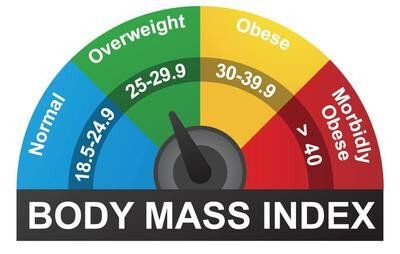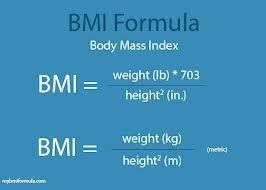Within the past decade doctors and insurance companies have based their measure of a person’s health upon his or her Body Mass Index. This was viewed as an answer to the questionable judgement of weight as the barometer for health. We all know now that weight, alone, is a fallible measure of health. It is possible to weigh a lot or a little and still be in good health. So if doctors and health experts found the flaws with a weight-based measurement of health, why, now, do they base so much on the flawed system of BMI? This affects not only the physical and mental health of millions of Americans, but also their bank accounts by way of insurance estimates.
The results of a study performed by UCLA psychologists to measure the overall precision of using BMI in determining a person’s health were published in International Journal of Obesity January 2018 and the conclusion is amazing. They found that at least 54 million U.S. citizens are labeled “unhealthy” based on their BMI. “The study found that close to half of Americans who are considered “overweight” by virtue of their BMIs (47.4 percent, or 34.4 million people) are healthy, as are 19.8 million who are considered “obese” (UCLA 2018). As this was a large scale study of so many Americans, it is important to note the widespread endemic of lacking health education. If the “experts” can’t agree on an appropriate measure for health, what have people to go on? It is also important to note that within that same study, other findings show that more than thirty percent of people with a BMI in the “normal range” are actually unhealthy based on other health data. Also, about fifteen percent of Americans who have a BMI of 35+ are indeed healthy.
Body Mass Index (BMI) is calculated by taking your body weight in kilograms and
dividing that number by your height in meters squared. To solely measure someone’s health by looking at that person’s height and weight is to basically diminish a person to nothing more than a rectangle. The flaws with this system are inherently that we need to be looking at a person’s overall health as opposed to an incomplete measure of a portion of that person. I will always argue for looking at a person’s health holistically over looks, strength, calorie-intake, etc.
A few examples that can play a major role in a person’s overall health are things
like blood pressure, cholesterol and glucose levels, body fat percentage, where the fat is located on the body, and resting heart rate that simply cannot be accounted for by calculating a person’s weight/height percentage. “…It is increasingly clear that BMI is a rather poor indicator of percent of body fat. Importantly, the BMI also does not capture information on the mass of fat in different body sites” (Nutrition Today 2015). The location of the fat on a person’s body appears to significantly increase the person’s risk of heart disease, diabetes and hypertension (Omichinski 2010). More importantly, a person’s waist circumference has shown to be more closely connected to cardiovascular risk factors than weight or BMI. So the percentage of body fat is part of the consideration of factors of health, but is most definitely not an exclusive determining factor.
It is so imperative to consider a person’s overall lifestyle choices. Diet and
exercise are what we all emphasize the most, but other factors such as sleep,
sedentary lifestyle, stress, genetic factors and more can truly contribute to or severely diminish a person’s health.
Before agreeing to any dietary or exercise plan, BMI should be part of the consideration, but should absolutely not be the only factor for a person’s health.
For a free personal training session or to learn more about our programs call 469-675-3378 or click here to fill out a form!
References:
Nutrition Today. 2015 May;50(3):117-128. Epub 2015 Apr 7.
Oichinski, Linda (2010). “Nondiet Weight Management: A Lifestyle Approach to Health
and Fitness. continuingEDUCATION.com. 6th Edition.
Wolpert, Stuart. (2016). UCLA Newsroom. Don’t use body mass index to determine
whether people are healthy.
http://newsroom.ucla.edu/releases/dont-use-body-mass-index-to-determine-whether-people-are-healthy-ucla-led-study-says






